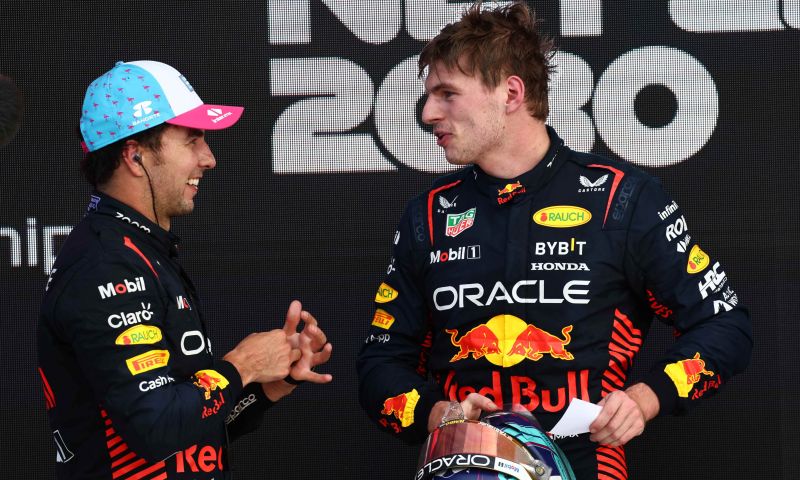Exclusive

Analysis | Where Verstappen managed to break teammate Perez in Miami
Max Verstappen managed to win the Miami Grand Prix from P9. How did he manage to beat Sergio Perez in the same RB19 from so far up the grid? In this analysis, find out where Verstappen managed to break his teammate.
Superior Verstappen makes one mistake
All weekend, Verstappen was superior until one moment in Q3. In the first run, things briefly went wrong for Verstappen in the first sector, where he had just been so strong until then. Perez made no mistake and after a red flag for Charles Leclerc's crash, the Mexican's time, which was slower than Verstappen's Q2 time, proved to be good enough for pole. Verstappen had to start from P9 due to his aborted lap.
Given the weekend, Verstappen was certainly not hopeless, but how he drove from the back to the front still impressed a lot. The hard tyres under Verstappen's RB19 took a whopping three laps to settle in. Although Verstappen had to work his way past other cars on softer rubber on the hardest tyre in Miami, between lap four and lap 15 (the lap where he came second), he drove just one lap slower than Perez.
So where the Mexican could have used the early stages of the race to run out, it was the Dutchman who caught up. As a result, when Verstappen moved into second place on lap 15, the gap was just under four seconds. From that lap onwards, Verstappen started to catch up with Perez on a lap-by-lap basis.
Perez breaks under pressure from Max
That 3.7s gap melted away like snow in the sun. Despite Perez having been able to drive in free air and Verstappen having to overtake drivers, the hard tyre appears to have a lot more life in it than Perez's medium. Lap by lap, Verstappen is catching up, until Perez dives in on lap 20. The gap was then down to 1.3s. In just under six laps, Verstappen was running 2.4s in on Perez. 0.4s per lap, in other words.
On new hard tyres, Perez must then attack Verstappen and the Mexican starts energetically. 18.8s is the gap when Perez re-enters the track after his pit stop and in the nine laps that follow, Perez is eight quicker than his teammate. The gap then also narrows to 15.5s. The older Verstappen's tyre gets, the more Max should lose, but that does not appear to be the case.
Whereas Perez has been driving under 1:32 the whole time, on lap 31 he suddenly has an outlier to a 1:32.111. The lap comes at a bad time, as Verstappen has just been told that his tyres have remained nicely whole and can be pushed more again. So Verstappen gains ground again.
This turns out to be the breaking point in the race. Indeed, on newer tyres of the same colour, Perez starts to lose ground lap by lap. From that lesser lap 31 to lap 44, Perez is only faster than Verstappen three times. Whereas Verstappen consistently manages to drive low 1:31s, 'Checo's' times fluctuate wildly. On lap 38, for instance, he has an outlier to the 1:32.3 mark. By comparison, Verstappen drives a 1:31.1 on the same lap.
Passing on the track
Due to the impressive second part of his stint on hard tyres, Verstappen has increased the lead back to 18.3s when he enters the pits for new mediums at the end of lap 45. Perez has thus gained a net half-second on Verstappen on new hard tyres. After a somewhat slow stop for Verstappen, he ends up behind Perez on fresh mediums and the Dutchman knows how to deal with it.
Of course, Verstappen still had to pass his teammate on the track, but the biggest blow dealt Verstappen halfway through the race. Perez was already shocked by Verstappen's data at the weekend and had to acknowledge his superiority to the two-time world champion on Sunday. As a result, the Mexican is back with both feet on the ground and will have to deal with this mental blow before heading to a circuit that may suit Max even more: Imola.